
Полезные материалы за все 6 курсов / Учебники, методички, pdf / Kaplan Pediatrics USMLE 2CK 2021
.pdf
USMLE Step 2 CK λ Pediatrics
•Most vaccines can be safely and effectively administered simultaneously.
•A lapse in schedule does not require reinstitution of the entire series.
•Unknown or uncertain immunization status
–When in doubt, the child should be considered to be disease-susceptible, and appropriate immunizations should be initiated without delay.
–To be counted, the vaccine(s) must be documented on a formal immunization record, regardless of country.
•Dose—No reduced dose or divided dose should be administered, including to babies born prematurely or at low birth weight (exception: first dose hepatitis B).
•Active immunization of people who recently received gamma globulin
–Live virus vaccine may have diminished immunogenicity when given shortly before or during the several months after receipt of immunoglobulin (Ig) so live vaccine is delayed (3–11 months).
Institute of Medicine Immunization Safety Review Committee findings
•Available evidence does not support the hypothesis that the MMR causes autism, associated disorders, or inflammatory bowel disease. (Lancet report of Wakefield has been found to be fraudulent)
•Based on epidemiologic evidence, there is no causal relationship between multiple immunizations and increased risk of immune dysfunction and type 1 diabetes.
•There is no causal relationship between hepatitis B vaccine administration and demyelinating neurologic disorders.
•There is no causal relationship between meningococcal vaccination and GuillainBarré.
•Preservative thimerosal (Hg-containing) not causative of any problems (has now been removed)
Misconceptions
The following are not contraindications to immunizations:
•A reaction to a previous DTaP of temperature <40.6 C (<105 F), redness, soreness, and swelling
•A mild, acute illness in an otherwise well child
•Concurrent antimicrobial therapy
•Prematurity—immunize at the chronological age
•A family history of seizures
•A family history of sudden infant death syndrome
Accepted Precautions and Contraindications
•Minor illness, with or without a fever, does not contraindicate immunization.
•Fever, per se, is not a contraindication.
–Guidelines for administration are based on the physician’s assessment of illness and on specific vaccines the child is scheduled to receive.
–If fever or other problems suggest moderate or serious illness, the child should not be immunized until recovered.
54

Chapter 6 λ Immunizations
Live Vaccines and Immune Status
•No live vaccines with primary B-cell defects, except for selective IgA deficiency
•May be given with incomplete DiGeorge syndrome (if CD3 count >500 and CD8 >200 and there are normal mitogen responses)
•May give live viral vaccines but not bacterial (oral typhoid, BCG) with phagocytic defects
•May give live vaccines with complement defects
•HIV: may give rotavirus, MMR, and varicella if health status related to HIV conditions is good and CD4% >15%; otherwise they are delayed
•Chemotherapy: MMR and varicella can be given ≥3 mos after completion of
therapy except for anti B-cell drugs, where longer periods may be necessary (e.g. rituximab, ≥6 mos)
ACTIVE IMMUNIZATION AFTER DISEASE EXPOSURE
Measles
Table 6-2. Measles
|
Age |
|
|
Management (post-exposure) |
|
|
|
|
|
|
|
|
0–6 months |
Immune serum globulin if mother is not immune |
|||
|
|
|
|
|
|
|
Pregnant or immunocompromised |
Immune serum globulin |
|||
|
|
|
|
|
|
|
All others |
Vaccine within 72 hours of exposure for |
|||
|
|
|
susceptible individuals |
||
|
|
|
|
|
|
Varicella
•Give vaccine to susceptible immunocompetent contacts age >12 months as soon as possible and VZIG to all immunocompromised and susceptible pregnant women. No vaccine or VZIG for healthy infants age 0-12 months.
•VZIG also for susceptible pregnant women, newborn whose mother had the onset of chickenpox within 5 days before delivery to 48 hours after delivery, and certain hospitalized premature infants
Hepatitis
•Hepatitis B: after exposure in nonimmune patient, give hepatitis B Ig plus vaccine; repeat vaccine at 1 and 6 months.
•Hepatitis A: if patient is not vaccinated, give 1 dose of vaccine as soon as possible but within 2 weeks of exposure
Mumps and Rubella
•Not protected by postexposure administration of live vaccine
•Recommended for exposed adults who were born in the United States in or since 1957 and who have not previously had or been immunized against either; except pregnancy
Published by dr-notes.com |
55 |
|
|
|
|

USMLE Step 2 CK λ Pediatrics
SPECIFIC VACCINES (ROUTINE VACCINATION)
Hepatitis B
•First dose should be given soon after birth, before hospital discharge, with a total of 3 doses by age 18 months if mother is HBsAg negative.
•The infant born to a hepatitis B surface antigen (HBsAg)-positive mother should receive the first dose of hepatitis B virus (HBV) plus hepatitis B Ig at 2 different sites within 12 hours of birth; all 3 doses should be given by age 6 months (treat same as exposure).
•All children and adolescents who have not been immunized should begin the series during any visit to the physician.
DTaP
•All DTaP vaccines for the United States currently contain acellular pertussis.
•The rates of local reactions, fever, and other common systemic reactions are substantially lower with acellular pertussis vaccines than with whole-cell vaccine (but may still occur). Use DT if there has been a serious reaction. No full dose pertussis or diphtheria after age 7 years, 0 days.
•Total of 5 doses is recommended before school entry, with the final given at preschool age, 4–6 years.
•Pertussis booster (Tdap) vaccine is now recommended during adolescence, regardless of immunization status; is also recommended even if one has already had pertussis disease.
•Tdap (childhood tetanus) is given at age 11–12, and then Td (adult tetanus) every 10 years; may be given any time after 7th birthday if needed because it contains only partial doses of diphtheria and pertussis
Tetanus
Table 6-3. Tetanus Prophylaxis in Wound Management
|
History of Doses of Tetanus Toxoid |
|
|
Clean, Minor Wounds |
|
|
|
All Others* |
|
|
|
|
|
|
|
|
|
|
|
|
|
|
|
|
|
Td |
TIG |
|
Td |
TIG |
||
|
|
|
|
|
|
|
|
|
|
|
|
<3 or unknown |
|
Yes |
No |
|
Yes |
Yes |
|||
|
|
|
|
|
|
|
|
|
|
|
>3 |
|
|
No, unless >10 years |
No |
|
No, unless >5 years |
No |
|||
|
|
|
|
from last dose |
|
|
|
from last dose |
|
|
|
|
|
|
|
|
|
|
|
|
|
Definition of abbreviations: TIG, tetanus immune globulin; Td, tetanus and diphtheria vaccine.
*All other wounds = increased risk of tetanus: dirt, saliva, feces, avulsions, frostbite, puncture, crush, burns, and missiles.
IPV
•Inactivated is now the only poliovirus vaccine available in the United States.
•Four doses of IPV, with the last at preschool age, 4–6 years
•Any child up to 18 years of age should receive all doses, if behind.
•Any child who has received OPV from another country should complete schedule in United States with IPV.
56
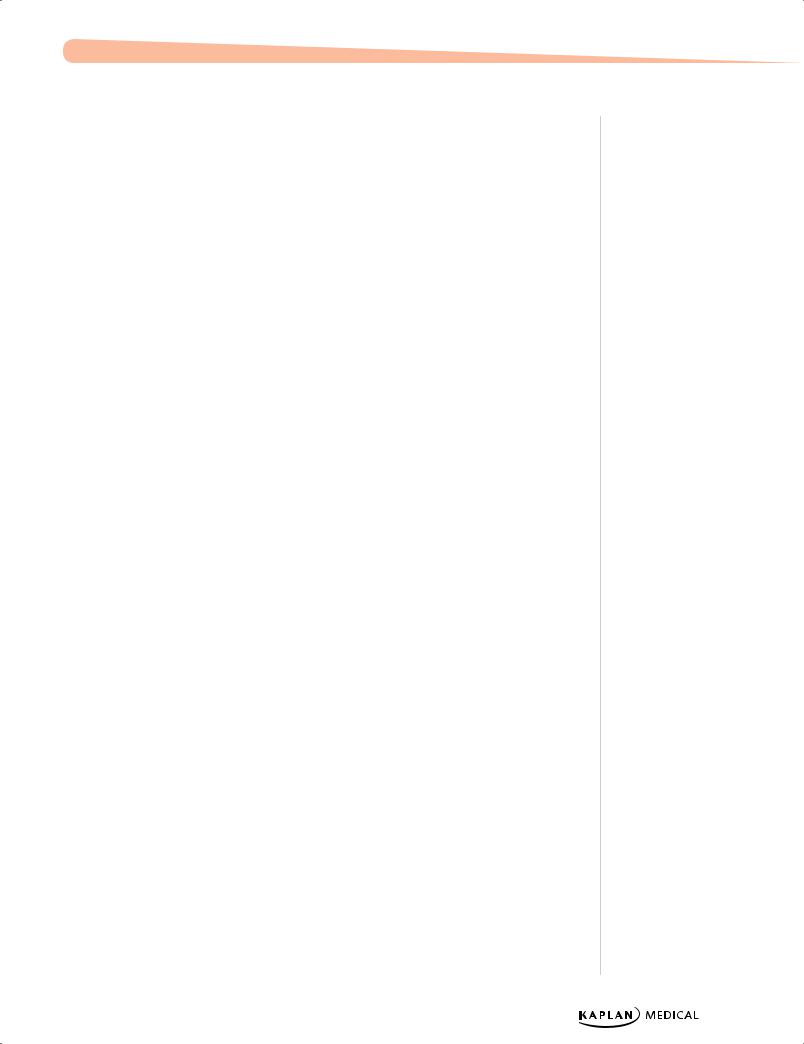
Chapter 6 λ Immunizations
HiB Conjugated Vaccine
•Does not cover nontypeable Haemophilus
•Depending on the vaccine brand, the recommended primary series consists of 3 or 4 doses.
•After the primary series, an additional booster dose is recommended at 12–15 months of age, regardless of which regimen was used for the primary series.
•If immunization is not initiated (i.e., child is behind) until age 15–59 months, then there is catch-up (1 dose), but not given after age 5 years in normal children
•Invasive disease does not confirm immunity; patients still require vaccines if age appropriate, i.e., age <5 years.
Pneumococcal Vaccines
•Pneumococcal conjugate vaccine (PCV13)
–Purified polysaccharides of 13 serotypes conjugated to diphtheria protein
–Routine administration as a 4-dose series for all children age 15 months and younger
–If no dose given yet between age 15–59 months, then there are catch-up doses
•23-valent pneumococcal polysaccharide vaccine (PS23)—given as additional protection to the PCV13 in some high-risk children (e.g., functional/anatomic asplenia) age >2 years
•Age ≥65 years (PPSV-23)
Varicella
•Recommended at age 12 months or older for healthy people who have not had varicella illness, with second dose at age 4–6 years
•Catch-up dosing: both doses should be given for proper immunity
•May still have breakthrough varicella; milder than unimmunized, rarely spreads
•Has been associated with the development of herpes zoster after immunization (rare)
•Most people age >18 years, even without a reliable history of varicella infection, will still be immune.
MMR
•Live attenuated vaccine: issues are similar to those for varicella
•First dose given at age 12–15 months
•Second dose given at preschool age, 4–6 years
•Catch-up with 2 doses
•Documented egg allergy is not a contraindication to the MMR. MMR is derived from chick embryo fibroblast tissue cultures but does not contain significant amounts of egg cross-reacting proteins.
•HIV: varicella and MMR should be given if CD4 showing >15 CD4/total lymphocytes AND no AIDS-related illness at vaccination time
•Immunoglobulin-containing products: if given recently, must wait to administer varicella and MMR, as IG may inactivate the live vaccine
Note
Advantages of conjugated polysaccharide vaccines (HIB, PCV13, MCV4) over nonconjugated:
•Effective <2 years of age
•Effect from booster doses
•Long-term immunity
Published by dr-notes.com |
57 |
|
|
|
|

USMLE Step 2 CK λ Pediatrics
Note
MPSV4 is the older, pure polysaccharide vaccine, while MCV4 is the newer, conjugated vaccine.
Hepatitis A Vaccine
•Recommended for all children age >1 year (12–23 months)
•Two doses, 6 months apart
•Also recommended routinely for chronic liver disease patients, homosexual and bisexual men, users of illegal drugs, patients with clotting-factor disorders, and those at risk of occupational exposure
•Can give with other vaccines
Meningococcal Conjugate Vaccine (MCV4)
Administer MCV4 to
•All children at the age 11–12 visit and booster at age 16
•All college freshmen living in dormitories, if not vaccinated
•There is now a vaccine for serotype B for high risk patients and during outbreaks (status post concurrent type B outbreaks at Princeton and UC Santa Barbara)
•Meningococcal B vaccine is recommended only for those at increased risk for meningococcal B disease—persistent complement component deficiencies (C3, C5-C9, properdin, factor D, factor H); anatomic or functional asplenia,
including sickle cell disease; and those residing in a community with a serogroup B meningococcal disease outbreak per the local health department on the basis of
CDC criteria (college students not considered at increased risk since the incidence is not greater than that of the same-aged general population)
Influenza Vaccine
•Inactivated influenza vaccine (typical flu shot)
–Administered intramuscularly
–Inactivated influenza vaccine has been deemed safe in egg-allergic patients
–Given annually during flu season for children age >6 months (A strains, B strains, and H1N1)
•Live influenza vaccine
–Live attenuated vaccine has recently had only 3% effectiveness so has not been used in last 2 seasons; the AAP has stated that it may be used in 2019 season, but the preferred vaccine is the quadrivalent inactivated vaccine
•Influenza vaccine contains egg protein but studies have shown that, like reactions secondary to any component in any vaccine, there are only rare instances of severe reaction in people who truly have an egg protein allergy. As a result, the American Academy of Pediatrics states that children with egg allergy can receive influenza vaccine with no additional precautions than those considered for any vaccine. This means that for any vaccine administration, the patient should be observed postadministration and any severe allergic manifestations should be anticipated and treated appropriately with medication should they occur.
58
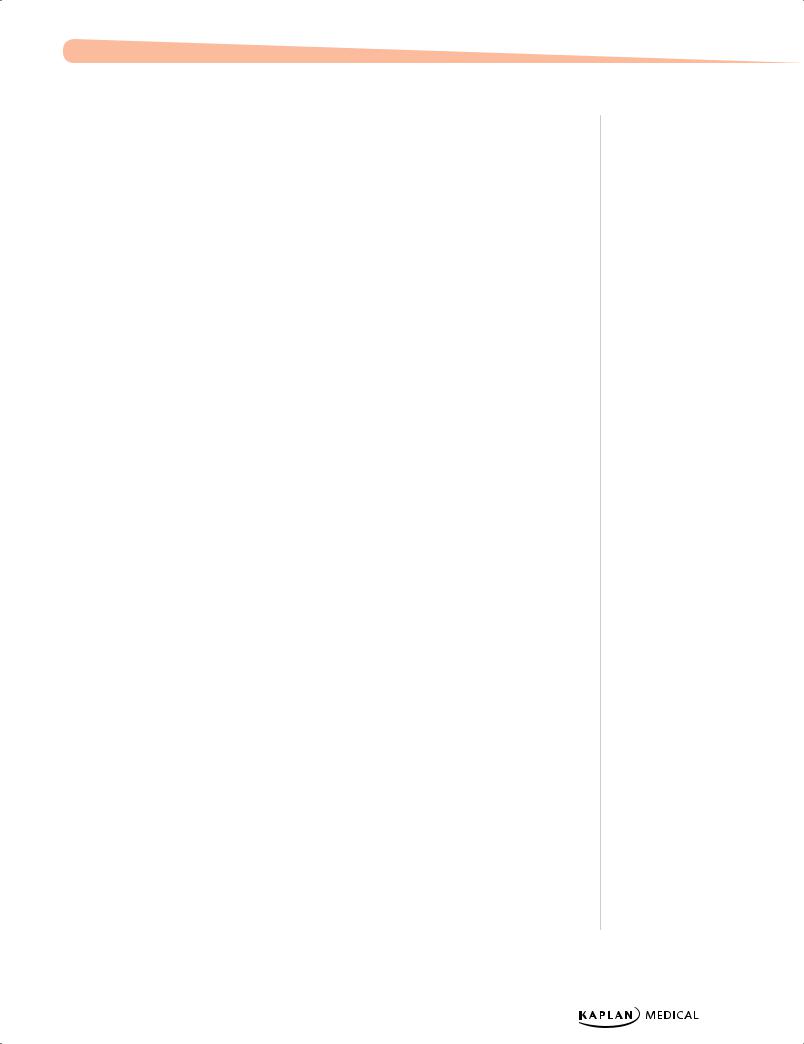
Chapter 6 λ Immunizations
Rotavirus Vaccine
•Oral live attenuated vaccine
•Given at ages 2, 4, 6 months
•Essentially no catch-up if behind (no dose after age 8 months)
•Older vaccine was associated with cases of intussusception; current vaccine is reformulated and there are few cases. Intussusception precludes getting another dose.
Human Papillomavirus (HPV) Vaccine
•Quadrivalent vaccine (6, 11, 16, 18) or bivalent vaccine (16, 18) to girls at the age 11-12 visit (through age 26) for cervical cancer prevention
•Quadrivalent vaccine (6, 11, 16, 18) to boys age 11–12; for genital warts caused by HPV 6,11.
•Can give in both males and females as early as age 9.
•3 doses
–Now 9-valent in both girls (9–26) and boys (9–15): 6, 11 (genital warts), 16, 18, 31, 33, 45, 52, 58 (cervical cancer prevention)
–Precancerous lesions (all 9) including anal intraepithelial neoplasia
–Anal cancer (16, 18, 31, 33, 45, 52, 58)
•Doses 2 and 3: give at 2 months and then 6 months after first
Clinical Recall
An 11-year-old girl is brought to the emergency department after falling off her bicycle on a trail in the forest. She has a few minor wounds, some of which contain dirt or tree debris. Her primary vaccines were completed at age 5 and she has not no vaccines since that time. What treatment should she receive?
A.Tetanus and diphtheria (Td) vaccine only
B.Td vaccine + tetanus immune globulin (TIG)
C.TIG only
D.Diphtheria vaccine only
E.Tetanus vaccine only
Answer: A
Published by dr-notes.com |
59 |
|
|
|
|
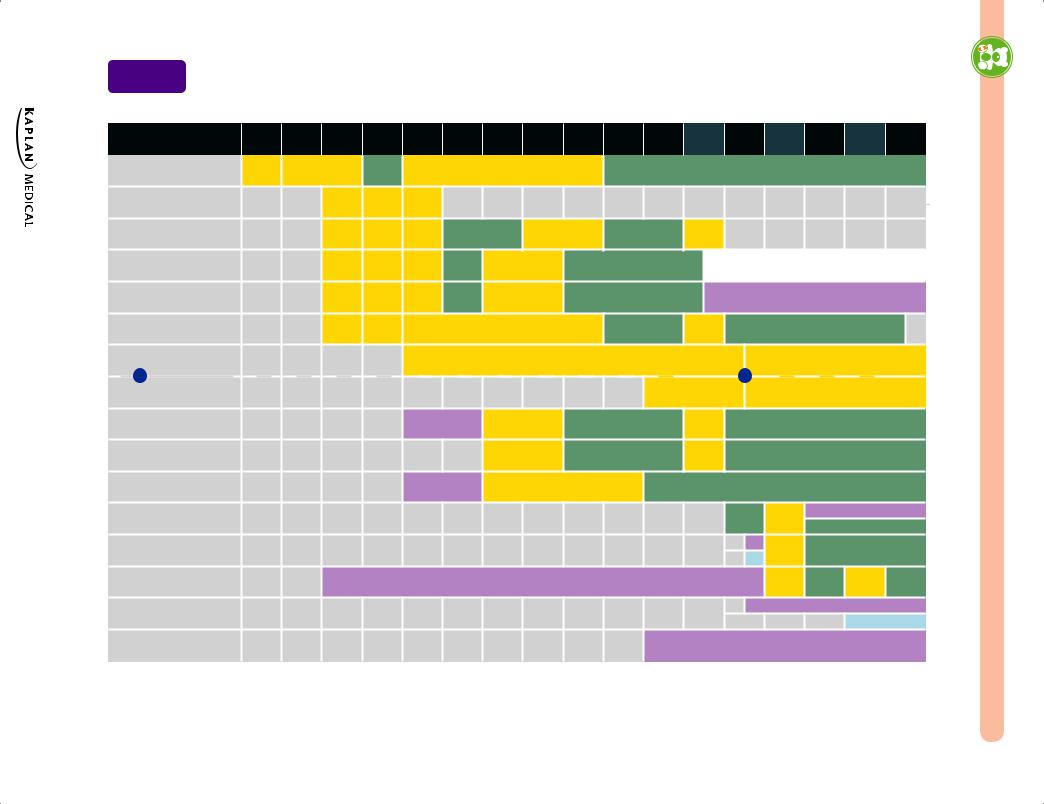
60 |
For |
|
.gov/vaccines.cdc to go footnotes, specific and details more |
|
|
Table 1 |
Recommended Child and Adolescent Immunization Schedule for ages 18 years or younger, |
|
United States, 2020 |
These recommendations must be read with the notes that follow. For those who fall behind or start late, provide catch-up vaccination at the earliest opportunity as indicated by the green bars. To determine minimum intervals between doses, see the catch-up schedule (Table 2). School entry and adolescent vaccine age groups are shaded in gray.
|
Vaccine |
Birth |
|
1 mo |
|
2 mos |
|
4 mos |
6 mos |
9 mos |
12 mos 15 mos 18 mos |
19–23mos |
|
2–3 yrs 4–6 yrs 7–10 yrs |
11–12 yrs 13–15 yrs |
16 yrs 17–18 yrs |
||||||||||||||||||||||
Hepatitis B (HepB) |
1st dose |
|
2nd dose |
|
|
|
|
---------------------------- 3rd dose ---------------------------- |
|
|
|
|
|
|
|
|
|
|
|
|
|
|
|
|
|
|
|
|
|
|
|
|
||||||
Rotavirus (RV): RV1 (2-dose |
|
|
|
|
1st dose |
|
2nd dose |
See Notes |
|
|
|
|
|
|
|
|
|
|
|
|
|
|
|
|
|
|
|
|
|
|
|
|
|
|
||||
series), RV5 (3-dose series) |
|
|
|
|
|
|
|
|
|
|
|
|
|
|
|
|
|
|
|
|
|
|
|
|
|
|
|
|
|
|
|
|||||||
Diphtheria, tetanus, acellular |
|
|
|
|
1st dose |
|
2nd dose |
3rd dose |
|
----- 4th dose ------ |
|
|
|
5th dose |
|
|
|
|
|
|
|
|
|
|
|
|||||||||||||
pertussis (DTaP <7 yrs) |
|
|
|
|
|
|
|
|
|
|
|
|
|
|
|
|
|
|
|
|
||||||||||||||||||
Haemophilus influenzae type b |
|
|
|
|
|
|
|
|
|
|
|
3rd or 4th dose, |
|
|
|
|
|
|
|
|
|
|
|
|
|
|
|
|
|
|
|
|
|
|
|
|
||
|
|
|
|
|
|
|
|
|
|
|
|
|
|
|
|
|
|
|
|
|
|
|
|
|
|
|
|
|
|
|
|
|
|
|
||||
(Hib) |
|
|
|
|
1st dose |
|
2nd dose |
See Notes |
|
-- See Notes -- |
|
|
|
|
|
|
|
|
|
|
|
|
|
|
|
|
|
|
|
|
|
|
|
|
||||
Pneumococcal conjugate |
|
|
|
|
1st dose |
|
2nd dose |
3rd dose |
|
----- 4th dose ----- |
|
|
|
|
|
|
|
|
|
|
|
|
|
|
|
|
|
|
|
|
|
|
|
|
||||
(PCV13) |
|
|
|
|
|
|
|
|
|
|
|
|
|
|
|
|
|
|
|
|
|
|
|
|
|
|
|
|
|
|
||||||||
Inactivated poliovirus |
|
|
|
|
1st dose |
|
2nd dose |
---------------------------- 3rd dose ---------------------------- |
|
|
|
|
4th dose |
|
|
|
|
|
|
|
|
|
|
|
||||||||||||||
(IPV <18 yrs) |
|
|
|
|
|
|
|
|
|
|
|
|
|
|
|
|
|
|
|
|
||||||||||||||||||
Influenza (IIV) |
|
|
|
|
|
|
|
|
|
|
|
Annual vaccination 1 or 2 doses |
|
|
|
|
|
|
|
|
|
|
|
|
|
Annual vaccination 1 dose only |
||||||||||||
|
or |
|
|
|
|
|
|
|
|
|
|
|
|
|
|
|
|
|
|
|
|
|
|
|
or |
|
|
|
|
|
|
|
|
|
|
|
|
|
|
|
|
|
|
|
|
|
|
|
|
|
|
|
|
|
Annual vaccination |
|
|
|
|
|
|
|
|
|
|
|
|||||||||||
Influenza (LAIV) |
|
|
|
|
|
|
|
|
|
|
|
|
|
|
|
Annual vaccination 1 dose only |
||||||||||||||||||||||
|
|
|
|
|
|
|
|
|
|
|
|
|
|
1 or 2 doses |
|
|||||||||||||||||||||||
|
|
|
|
|
|
|
|
|
|
|
|
|
|
|
|
|
|
|
|
|
|
|
|
|
|
|
|
|||||||||||
Measles, mumps, rubella (MMR) |
|
|
|
|
|
|
|
|
|
See Notes |
----- 1st dose ----- |
|
|
|
|
2nd dose |
|
|
|
|
|
|
|
|
|
|
|
|||||||||||
Varicella (VAR) |
|
|
|
|
|
|
|
|
|
|
|
----- 1st dose ----- |
|
|
|
|
2nd dose |
|
|
|
|
|
|
|
|
|
|
|
||||||||||
Hepatitis A (HepA) |
|
|
|
|
|
|
|
|
|
See Notes |
2-dose series, See Notes |
|
|
|
|
|
|
|
|
|
|
|
|
|
|
|
|
|
|
|
|
|
|
|
||||
Tetanus, diphtheria, acellular |
|
|
|
|
|
|
|
|
|
|
|
|
|
|
|
|
|
|
|
|
|
|
|
|
|
|
Tdap |
|
|
|
|
|
|
|||||
pertussis (Tdap ≥7 yrs) |
|
|
|
|
|
|
|
|
|
|
|
|
|
|
|
|
|
|
|
|
|
|
|
|
|
|
|
|
|
|
|
|
||||||
|
|
|
|
|
|
|
|
|
|
|
|
|
|
|
|
|
|
|
|
|
|
|
|
|
|
|
|
|
|
|
|
|
|
|
|
|||
Human papillomavirus (HPV) |
|
|
|
|
|
|
|
|
|
|
|
|
|
|
|
|
|
|
|
|
|
|
|
|
|
|
See |
|
|
|
|
|
|
|||||
|
|
|
|
|
|
|
|
|
|
|
|
|
* |
|
|
Notes |
|
|
|
|
|
|
||||||||||||||||
|
|
|
|
|
|
|
|
|
|
|
|
|
|
|
|
|
|
|
|
|
|
|
|
|||||||||||||||
Meningococcal (MenACWY-D |
|
|
|
|
|
|
|
|
|
|
|
See Notes |
|
|
|
|
|
|
|
|
|
|
|
|
|
|
1st dose |
2nd dose |
||||||||||
≥9 mos, MenACWY-CRM ≥2 mos) |
|
|
|
|
|
|
|
|
|
|
|
|
|
|
|
|
|
|
|
|
|
|
|
|
|
|||||||||||||
Meningococcal B |
|
|
|
|
|
|
|
|
|
|
|
|
|
|
|
|
|
|
|
|
|
|
|
|
|
|
|
|
See Notes |
|||||||||
|
|
|
|
|
|
|
|
|
|
|
|
|
|
|
|
|
|
|
|
|
|
|
|
|
|
|
|
|
|
|
|
|
|
|
|
|||
Pneumococcal polysaccharide |
|
|
|
|
|
|
|
|
|
|
|
|
|
|
|
|
|
|
|
|
|
|
|
|
|
See Notes |
|
|
|
|
|
|
||||||
(PPSV23) |
|
|
|
|
|
|
|
|
|
|
|
|
|
|
|
|
|
|
|
|
|
|
|
|
|
|
|
|
|
|
|
|||||||
|
|
|
|
|
|
|
|
|
|
|
|
|
|
|
|
|
|
|
|
|
|
|
|
|
|
|
|
|
|
|
|
|
|
|
|
|||
|
Range of recommended ages |
|
|
Range of recommended ages |
|
Range of recommended ages for |
Recommended based on shared clinical |
|
|
No recommendation/ |
||||||||||||||||||||||||||||
for all children |
for catch-up immunization |
certain high-risk groups |
decision-making or |
|
not applicable |
|||||||||||||||||||||||||||||||||
*can be used in this age group
Pediatrics λ CK 2 Step USMLE
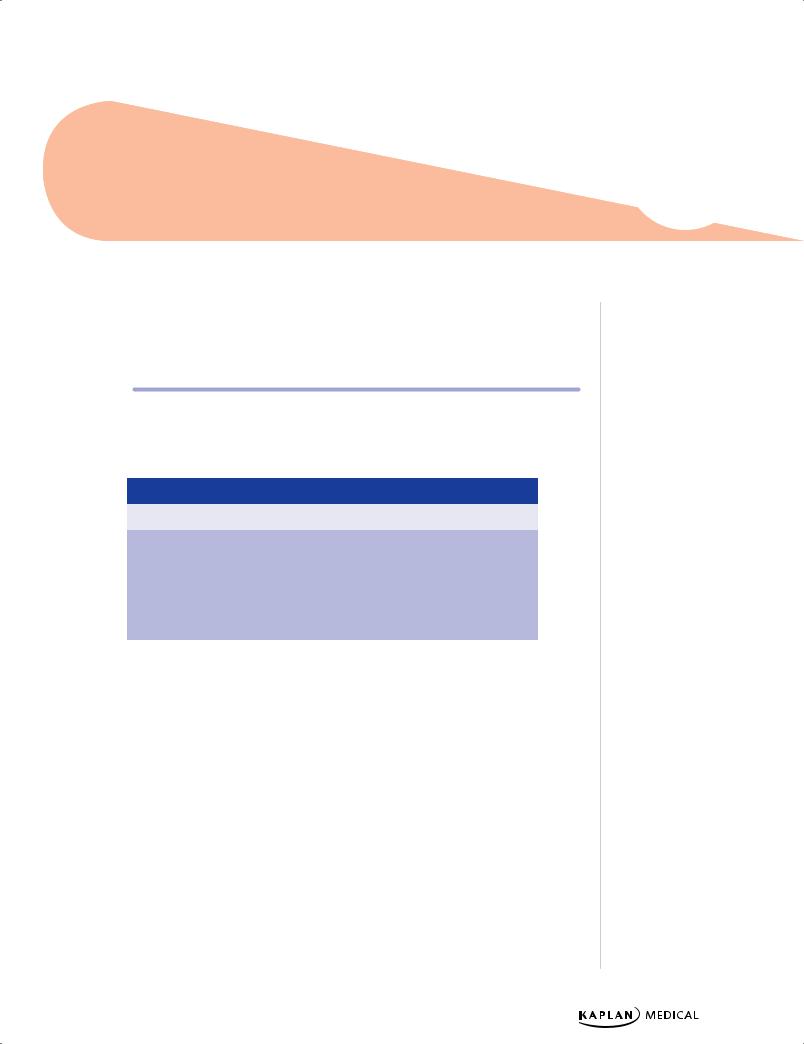
Child Abuse and Neglect |
7 |
Chapter Title |
Learning Objectives
Define physical, sexual, and psychological abuse
Describe the epidemiology of child abuse
INTRODUCTION
Table 7-1. Scope of Child Abuse and Neglect
|
|
Physical |
|
|
Psychological |
|
||
|
|
|
|
|
|
|
|
|
|
Abuse |
|
Neglect |
|
Abuse |
Neglect |
||
|
|
|
|
|
|
|
|
|
|
Fractures |
|
Food |
|
Terrorizing |
Love |
||
|
Bruises |
|
Clothing |
|
Putting down |
Support |
||
|
Burns |
|
Schooling |
|
Comparing |
Stimulation |
||
|
|
|
Medical care |
|
Insulting |
Recognition |
||
|
|
|
Safety |
|
|
|
|
|
|
|
|
|
|
|
|
|
|
Definitions
•Child maltreatment: abusive actions or acts of commission and lack of action, or acts of omission that result in morbidity or death
•Physical abuse: intentional injury to a child by a caregiver that results in bruises, burns, fractures, lacerations, punctures, or organ damage; may be accompanied by shortor long-term emotional consequences
•Psychological maltreatment: intentional verbal/behavioral acts or omissions such as withholding emotional responsiveness, isolating, terrorizing that result in adverse emotional consequences
•Sexual abuse: any act intended for sexual gratification of an adult
•Factitious disorder: intentionally giving poisons or toxins, or any other deceptive action to simulate a disorder
The consequences of child abuse and neglect are severe. Failure-to-thrive (FTT) (nutritional neglect) is the most common cause of underweight infants (>50% of all cases of FTT). Additionally, developmental delay and learning disabilities are common. Physical disabilities may occur, and possibly death.
Note
In all 50 states, physicians and child care providers are required to report suspected abuse/neglect. Failure to report may result in penalties or malpractice claims for damages.
•Affords lawsuit protection to those who report in good faith
•Allows for all clinical and lab evaluation and documentation without parents’ permission
Published by dr-notes.com |
61 |
|
|
|
|

USMLE Step 2 CK λ Pediatrics
Note
Certainty is not required to file a report to Child Protective Services (CPS). However,
one must determine whether parents have an understanding of disease processes and
the intellectual, emotional, economic, and physical resources to provide for the child.
Note
Battered child syndrome is suggested by bruises, scars, internal organ damage, and fractures in various stages of healing.
Epidemiology
There is a higher likelihood of abuse with caregivers who have history of abuse or violence:
•Young parental age
•Closely spaced pregnancies
•Lower socioeconomic status
•On military bases
•Spousal abuse
•Substance abuse
•Single parent (mother)
•Intellectually disabled child
•High stress level
•Preterm, low-birth-weight infants
PHYSICAL ABUSE
A 2-year-old boy presents to the emergency department with a skull fracture that the mother states resulted after he fell from the sofa onto a carpeted floor. On physical examination the child is alert. He is noted to have old bruising on the buttocks and back, as well as a cigarette burn on his palm. The mother states that the child “falls a lot” and is always touching things he should not.
Diagnosis
•When to suspect
–Injury is unexplained or implausible
–Injury is incompatible with the history given or with child’s level of development
–There are no reports of death or serious brain injury from witnessed falls <10 feet.
Clinical Findings
Bruises
•Most common
•Accidental: thin, leading surfaces overlying bone edges (e.g., shins)
•Nonaccidental: buttocks, genitals, back, back of hands, thoracoabdominal
•Shape of injury suggests object used: suspect with bilateral, symmetric, or geometric injuries
•Staging: bruises in various stages are not compatible with a single event
•Consider cultural issues, e.g., coining, cupping
62
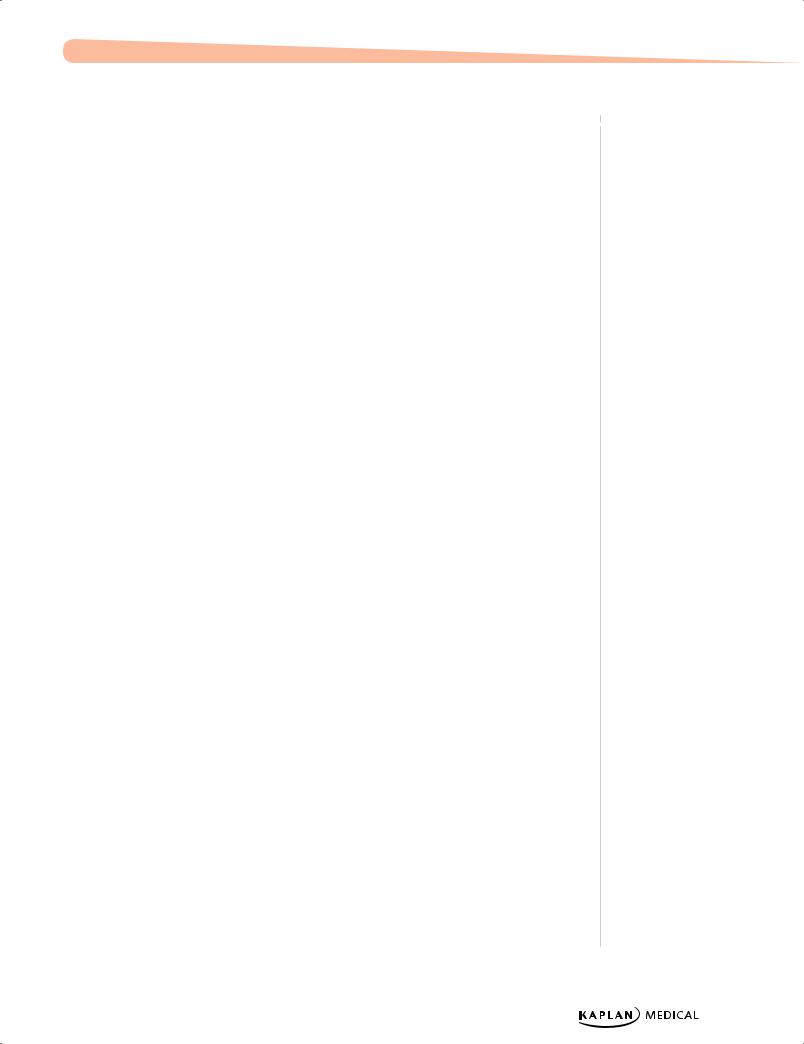
Chapter 7 λ Child Abuse and Neglect
Fractures
•Wrenching or pulling an extremity → corner chip or bucket handle fracture of metaphysis
•Inflicted fracture of bone shaft → more likely are spiral fractures from twisting rather than transverse from impact
•A spiral fracture of the femur before child can walk independently has usually been inflicted by someone else.
•Accidental impact rarely causes rib fracture or retinal hemorrhage in children
•Highly specific for abuse
–Rib fractures in infants
–Fractures of different stages of healing
–Bilateral fractures
–Complex skull fracture
Burns
•Cigarette burns → circular, punched-out lesions of uniform size
•Immersion burns (most common in infants)
–Glove-stocking pattern of extremity
–Dipping into bathtub water:
°Demarcation is uniform and distinct
°Flexion creases spared; hands and feet spared
°No splash burns
°Incompatible with falling into tub or turning on hot water while in tub
Intentional head trauma
•Most common cause of death
•Consider when injured infant presents with coma, convulsions, apnea, increased ICP
•A subdural hemorrhage in which there are no scalp marks or skull fracture is possibly from a hand blow.
•Retinal hemorrhages
•Shaking—acceleration-deceleration; may have no external marks; 85% associated with retinal hemorrhage
Intra-abdominal injuries
•Impacts
•Recurrent vomiting, abdominal distension, absent bowel sounds, localized tenderness, shock
•If struck with fist → row of 3–4 teardrop-shaped, 1-cm bruises in a slight curve
•May rupture liver or spleen
•Laceration of small intestine at sites of ligamental support
•Intramural hematoma → temporary obstruction
•Free air
Note
Differential Diagnosis
With osteogenesis imperfecta or severe osteomalacia, there is an increased incidence of pathologic fractures, but they are rarely of the metaphysis.
Note
Always obtain a CT scan for intracranial bleeding and an eye exam for retinal hemorrhages.
Published by dr-notes.com |
63 |
|
|
|
|
